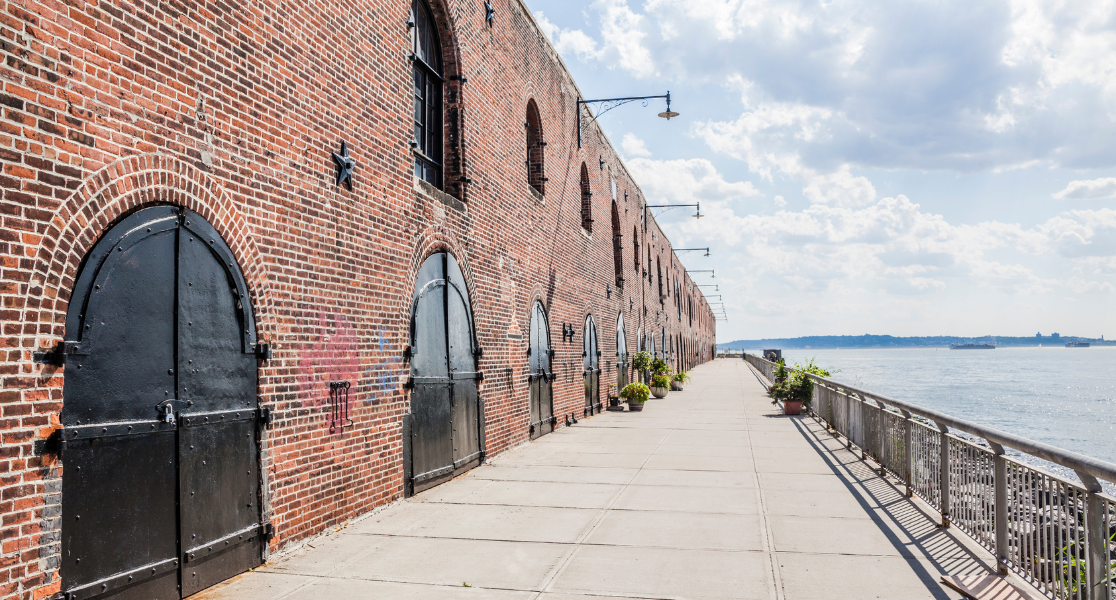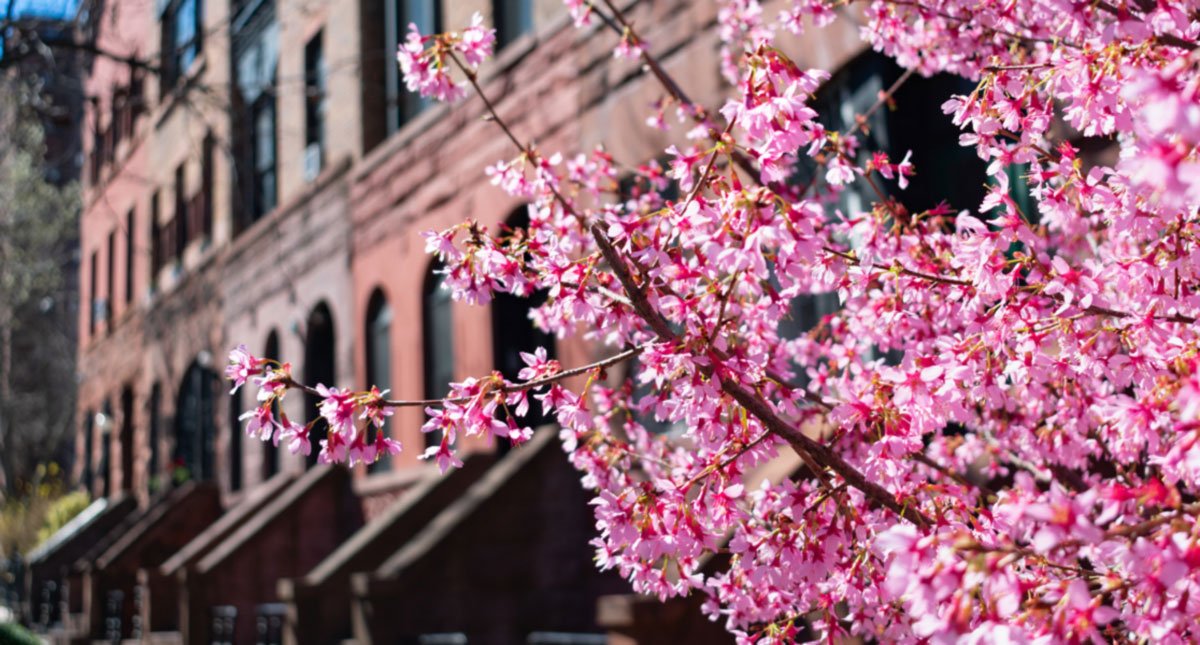Last week, I sat in a park in Brooklyn marveling at the springtime frolic that was happening all around me. People were picnicking and strumming guitars under cherry blossoms. Kids were chasing bubbles and zooming by on scooters. A group of 20-somethings had set up a tightrope between two trees and were quietly acrobat-ing. An old man was napping blissfully on a bench, face towards the sun, newspaper falling to his feet. “This is why we live here,” I overheard someone pronouncing as if on queue, speaking for the group. I smiled knowingly. After all, it is THE fantasy, right? Particularly the Brooklyn fantasy. It’s this idea, this notion that more space, more greenery, chiller people and a dog is the key to urban happiness, at least with a large subset right now.
I totally get it. We all romanticize what it would be like to live in different neighborhoods and depending on our propensity for fantasy have a varying degree of detail associated with what that life looks like. In my 20s, I had this idea that living on the Upper West Side meant I would be just like one of Hannah and Her Sisters in the eponymous Woody Allen Film. My life would be one big Fairway dinner party with highly intellectual conversation. I can tell you that the plates were Japanese, white, and square. I can picture the wooden carved candlestick holders and the floor to ceiling built-in bookshelves perfectly curated. It lives in my memory, a dream once dreamed. This is what my life would look like here.
It’s the same reason, in the early 2000s, the West Village saw a surge of young women move to the neighborhood during the height of Sex in the City—the notion that living the best life in NYC meant navigating stilettos on cobblestone while eating a magnolia cupcake. In my 30s, I had a whole Red Hook fantasy which involved me cruising around the former Brooklyn fishing village on a powder blue Vespa. Turns out many other people have Red Hook fantasies too—according to the NYPost, it just topped the charts for the neighborhood with the highest median rent in NYC. Red Hook—a neighborhood with almost no public transportation in a dangerously low flood zone. These 14 Neighborhoods are Now More Expensive Than Manhattan is a little deceiving in that the rental inventory in a place like Red Hook is so low that a few units on a high priced new development can push the median number up quite high. It’s old news that Brooklyn can be a more expensive and competitive market than Manhattan, but still…Red Hook?

According to The Post, it’s also more expensive to live in Hunters Point, Queens, and Gowanus than Manhattan—two formerly industrial neighborhoods that have been home to major environmental disasters. Is it just me or is that totally nuts? I guess it’s not when you think about what happens to a neighborhood post industry. That land gets sold to developers and turned into luxury rentals/condo and new city parks. There’s a blank canvas opportunity in a way that’s not feasible in historically residential neighborhoods.
Sales numbers tell the same story. The median price of a home in Gowanus is $1.9M versus $1.19M in Manhattan. That’s pretty dramatic. It would be more interesting to look at it on a price per square foot basis and see if it really is ultimately about physical space. The high number of Manhattan co-ops make that difficult. The reality is that moving to the outer boroughs to “get a great deal” is a thing of the past, the long ago past, and yet it’s still hard for New Yorkers to wrap their heads around.
I have a cousin who works for Google who moved to Williamsburg from the Upper East Side two years ago. She told me recently that she is so glad that she made the move because she still works from home 2-3 days a week and has “room to breathe” in her Brooklyn apartment. She also said that it’s so nice to go grab a coffee on the corner and chat with people (other young professionals who also have a hybrid schedule). It’s a whole scene, apparently. It made me think about how different the “this is what my life would like” game has become as a result of the pandemic. So many priorities have changed. The fantasy itself has changed.
It is useful to think about how the details of your client’s lifestyle dreams have evolved. I’m not talking about the bigger, more obvious changes that many have made by relocating to a new city or suburb or country. I’m talking about the mundane and the day-to-day. I’m talking about the little things that make up a perfect day. Is it an early run along the river before work? Is it a bike ride instead of the subway? Is it a quiet, well-lit room with a fresh notebook? Is it the fantasy, like my cousin’s, of walking to the corner coffee shop in designer sweats and flip flops in between Zoom meetings?
It all sounds a bit trite as I write but it matters. It’s in the details, you see. Every good salesperson knows that. The more you understand the intricacies of the fantasy the better you will be at selling the lifestyle. After all, selling real estate is selling a life well lived. It’s understanding how to deliver the dream. Master it and you can say, with great authority: “If you lived here, you would be home.”
Until next week,
![]()


